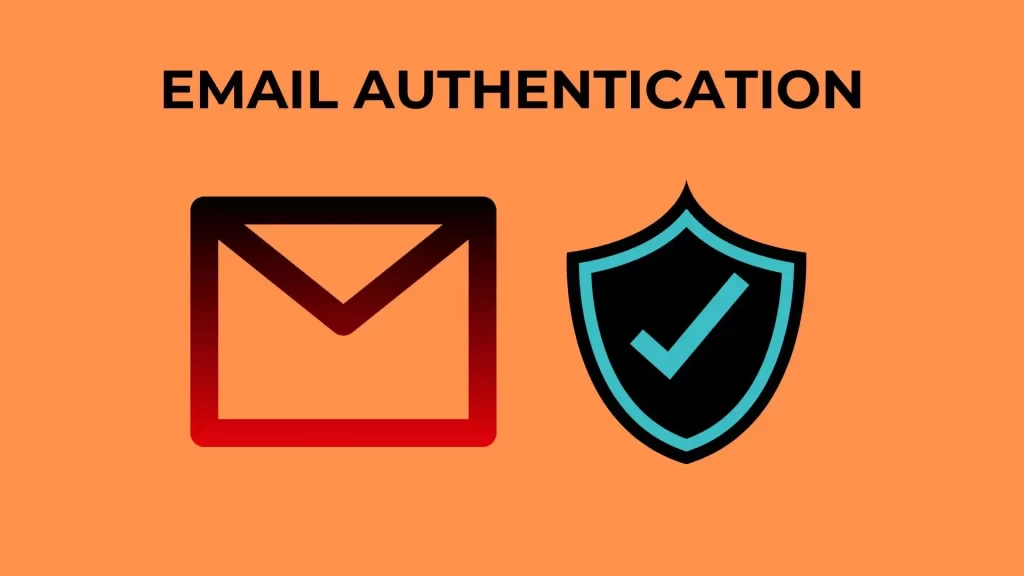Table of Contents
ToggleEmail authentication is a process where the sender’s identity is verified and made sure that the message in the email hasn’t gone through any unauthorized changes during transmission. The emails have a combination of technical standards and protocols that work together to protect email communications.
In these times, email has become an important tool. But, with the growing importance of emails, malicious activities like spam and phishing are growing too. So, email authentication is now a crucial mechanism that helps verify the authenticity of emails and protects users from these threats.
The Importance Of Email Authentication Important
Email Authentication has been more important since the other platforms have gained fame and the world has started turning digital. Here’s why it’s important:
- Prevents Spam: It verifies the sender’s identity and helps reduce the spam emails that reach your inbox.
- Reduces Phishing Attacks: Phishing emails trick receivers into clicking on suspicious links and provide sensitive information such as IDs and passwords. Email authentication helps prevent these kinds of attacks.
- Improves email deliverability: Email providers deliver emails from domains that have implemented email authentication. This makes them sure that these people aren’t involved in activities like phishing or spamming.
- Protects Brand Reputation: The strong email authentication policy helps in protecting the brand reputation by decreasing the amount of spam and phishing related to your domain.
Email authentication helps and protects from phishing scams, malware, and any other cyber threats. Being aware of this issue is crucial for keeping yourself and your device safe.
Some Common Authentication Methods
If you’re reading this, we’re sure that you’re trying to get more info on email authentication. If you have a business and want to get into email marketing, email authentication is the first step you should take to provide your subscribers with security. Here are some common methods to get email authentication.
Sender Policy Framework (SPF)
SPF lets a domain owner specify which IP addresses are allowed to send emails on behalf of their domain. This helps prevent any unauthorized senders from using your domain to spam other’s inboxes.
To implement SPF, the domain owners have to publish a TXT record which has lists of authorized IP addresses in their DNS. When the recipient receives the email they can check the SPF record of the sender’s domain to be sure that the sender’s IP address is authorized.
DomainKeys Identified Mail (DKIM)
DKIM allows the addition of a digital signature to emails that helps verify the sender’s identity and that the message hasn’t been edited or altered. This prevents email spoofing and any other kinds of email fraud.
Here, the sender has to add a digital signature to the email message and then, the receiver can verify the signature by using the sender’s public key which they’ve published in their DNS zone.
Domain-based Message Authentication, Reporting and Conformance (DMARC)
DMARC combines both SPF and DKIM to offer a unique and unified approach to email authentication. It lets the domain owners decide how they’re going to, or, want to handle the emails that fail authentication.
To apply DMARC, the owners publish the DMARC record in their DNS and decide what to do with emails that feel spammy and fail authentication. DMARC also provides reports of feedback to help owners find and address the authentication issues.
Some Best Practices For Email Authentication
Now, after you’ve learned the importance and methods of Email Authentication, you might also look for some best practices for email authentication. But wait! You can find it all here! Here are some steps and practices you can implement for email authentication-
- Implement all three methods of authentication i.e., SPF, DKIM, and DMARC for maximum protection.
- It’s important to choose the right DMARC policy. Select the DMARC policy that aligns with your business needs and risk tolerance.
- To be sure that your emails are received by the recipient, regularly monitor the authentication results and solve any issue that arises.
- Maintain all the records of authentication configuration and changes that you made within a period of time.
- To make your business secure, educate your employees too. Teach them the importance of email authentication and how can they know if an email is an attempt at phishing spam.
Some Common Problems and Their Straightforward Solutions
Sometimes, implementing email authentication can be a challenging task for businesses that have complex email infrastructures. In such a case, you should seek assistance from the IT department or qualified email consultants.
In other cases, even the unique, genuine emails are flagged as spammed or rejected mistakenly due to authentication failures. To avoid this situation and not let this happen again, you should review your authentication policies and rebuild them as needed.
Lastly, some email providers face difficulty in implementing email authentication due to the lack of knowledge of authentication policies and methods, Here, they should be educated about the same and encouraged to adapt to these practices.
Conclusion
Email authentication is an important practice to protect your business or organization from any kind of email threat and improve email deliverability. When you implement SPF, DKIM, and DMARC, you are able to verify sender identity, detect message alternation, and reduce spam if found.
Regularly checking and monitoring authentication results addressing any issues that arise and investing in email authentication can enhance your brand’s reputation and protect your customers from spam and scams.
So, take these steps, keep your email authenticated and protected, and provide a safer and more reliable communication medium to your subscribers as well as your business!







